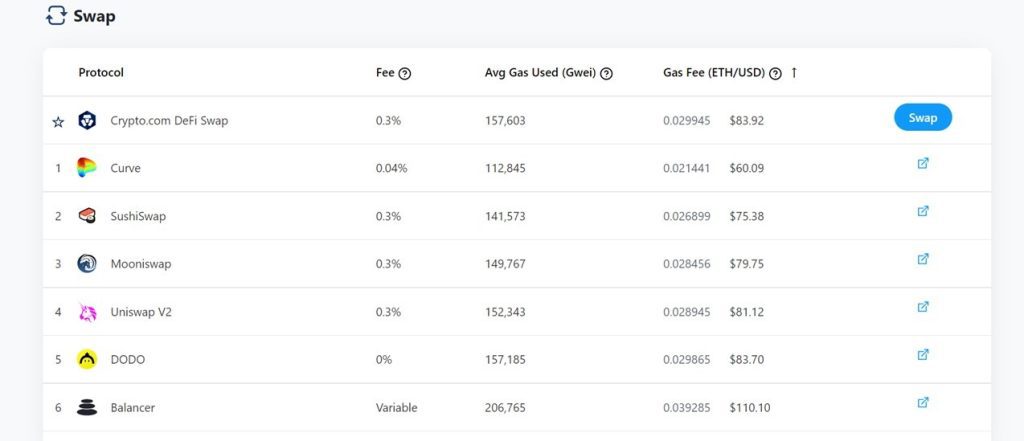
Key Takeaways
- Largest Ethereum-based NFT marketplace OpenSea went temporarily down due to technical issues
- The issue came about after Twitter announced it is integrating NFT feature to its avatar
- The problem has again highlighted the persistant scalability issue on the Ethereum network
YEREVAN (CoinChapter.com)- OpenSea, arguably the largest and most popular NFT marketplace went down on Thursday. According to an announcement issued by the company, the company suffered a temporary database outage, before resolving the problem.
“We are experiencing technical issues leading to a site outage. Teams are currently investigating,”
the announcement on their website reads.
As a result of the outage, users were unable to see their NFTs. The application programming interface (API) issue also resulted in several integrated services, such as crypto wallet MetaMask, having trouble displaying NFTs.
App security researcher Jane Manchun Wong, who also features on the Forbes under 30 lists, brought the issue to light on Twitter.
“OpenSea is down. Twitter uses OpenSea’s API for loading NFTs. Therefore, Twitter’s NFT feature is down,”
she wrote.
Twitter recently announced its new feature which allows users to connect their crypto wallets to their accounts to use one of their NFTs as their profile avatar. However, because OpenSea and affiliated apps crashed, the new Twitter feature also became temporarily unavailable.
Recommended: NFT Marketplace LooksRare; OpenSea “killer” on its way?
Is the Ethereum Network too congested for NFT?
The recent crash of OpenSea once again highlighted the much-discussed issue of the Ethereum Network, which hosts the NFT marketplace.
It is no secret that Ethereum has major gas (transaction fees) problem. Because the network was early to market in the blockchain ecosystem, it has attracted a large community. Several DeFi platforms and dApps have launched on the Ethereum ecosystem, thus establishing the network’s relevance. In addition, this has given its native token ETH utility, making it the second-largest cryptocurrency by market cap.
However, as more features get unloaded on the network, the issue of scalability gets highlighted again. Ethereum has been promising to fix its gas problem for quite some time, without much to show for it.
Of late, Ethereum has only managed to process about 15 transactions per second. In addition, gas fees have spiked to insane levels during high network congestion. A $35- $40 transaction fee, as a result, has become commonplace.
Last November, Ethereum’s CEO Vitalik Buterin proposed a new Ethereum Improvement Proposal (EIP) to fix the network’s high gas fee problem. The EIP-4488, according to Buterin, would add a new limit on the total transaction calldata, thus reducing transaction costs.
Alternatively, a simple reduction in the calldata gas cost could solve the problem. However, he warned of possible circumstances.
“Simply decreasing the calldata gas cost from 16 to 3 would increase the maximum block size to 10M bytes. This would push the Ethereum p2p (peer-to-peer]=) networking layer to unprecedented levels of strain and risk breaking the network; ”
he said.
Recommended: Selfie NFT collection by Indonesian student fetches over $1M on OpenSea
Twitter’s NFT feature too much for OpenSea to handle?
The fact that OpenSea’s network crash coincided with Twitter’s NFT avatar feature launch is symbolic. One cannot help to wonder if the Ethereum Network and platforms launched on it can afford to expand without such issues.
Since OpenSea hosts most NFTs on the Ethereum network, connecting a social media giant like Twitter could have been too big a bite to swallow.
As a result, the NFT marketplace has become a new meme topic on Twitter with many users criticizing its latest crash.
In addition, the exuberant gas fees continue to haunt the network. According to Crypto.com, Ethereum’s Swap gas fees on trading platforms remain very high.
For example, traders today on average pay $80 for a transaction on UniswapV2, while the gas fee on the Balancer went as high as $110. The fees are similar for supply and withdrawal liquidity pools.

As OpenSea faces challenges from other NFT marketplace alternatives, the clock is ticking for Ethereum. While some challengers like LooksRare are also on the Ethereum network, other blockchains such as Solana could pose serious challenges in the long run.
The problem is so real that JPMorgan felt it necessary to highlight it earlier this week. In a note to clients, JPMorgan’s analyst Nikolaos Panigirtzoglou saw upcoming challenges for the network. Ethereum’s NFT market share dropped from 95% at the start of 2021 to 80%.
“It looks like, similar to DeFi apps, congestion and high gas fees has been inducing NFT applications to use other blockchains. If the loss of its NFT share starts looking more sustained in 2022, that would become a bigger problem for ethereum’s valuation,”
Panigirtzoglou warned.
While OpenSea has since fixed the issue, the incident will hopefully get Ethereum back to its toes.


